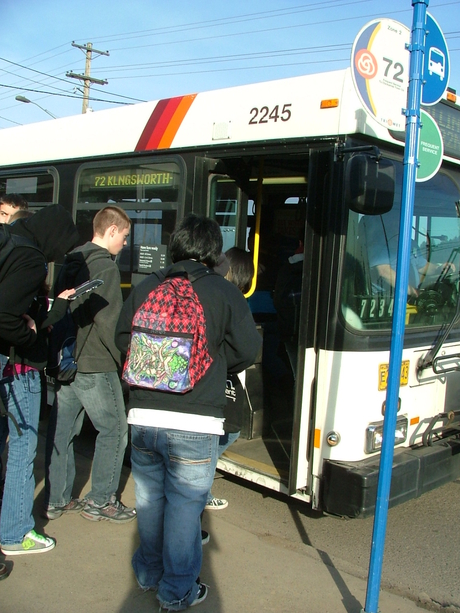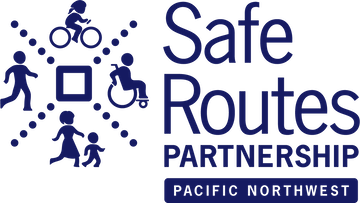Getting around as a youth can sometimes be hard – especially where distances are long and access to a vehicle is limited or non-existent. Decades ago, school districts recognized this problem and began “yellow school bus” service for those students who were too far away to walk to school. More recently, however, other issues have emerged as more pressing, especially for high schoolers with limited incomes: what if they miss the school bus and don’t have someone to take them to school? How do they get to after-school activities or jobs? Too often, they simply are unable to make it.
Youth Pass – typically a free or heavily subsidized transit pass for high school students – is a smart extension of any city's successful Safe Routes to School work, which focuses traffic safety education on elementary students, but it can work for middle or high schoolers in many places. For high school students, Youth Pass is a logical step to helping reduce congestion and reliance on vehicles, provides independent travel options, and builds future transit riders. Not just a way to get to school, it can also be key to increasing independence and student access to opportunities such as sports, clubs, and jobs.
Youth Pass is also an investment in equity, congestion relief, racial justice, and our youth as the future. When a transit agency, city, or school district provides a Youth Pass, it reflects an understanding that yellow school buses do not get everyone to school on time. The differing economic needs of high school students also requires more investment and support to ensure equitable outcomes; student schedules are dynamic, and more options for getting to school ensures students are more likely to graduate on time. In particular, for youth of color or from low-income families, Youth Pass provides more equitable travel options and access to more opportunities through transit use.

History of Youth Pass in Oregon & Washington
In the Pacific Northwest Regional Network area, many high school students have been lucky to be the recipients of Youth Pass programs to help them get to school and other destinations, but more work needs to be done to recognize the benefit of such a program, and ensure it reaches the students who need it most and will be sustained over time.
- Greater Portland - High school students in the Portland Public School District can ride TriMet free during the school year by showing their student ID. Students in other school districts in the region do not have this opportunity, and there is no program during the summer. Join us with our partners and allies OPAL Environmental Justice in the fight to bring YouthPass to more students in the greater Portland area.
- Salem-Keizer – A pilot program in 2009 allowed Salem-Keizer School District students to use their student ID to ride the bus free. Currently, Cherriots offers a low-price summer pass for unlimited use.
- Greater Eugene - Free LTD bus passes are available to high school students who are 4J residents, live more than 1.5 miles from their high school, qualify for free or reduced-price lunch, and do not receive school bus transportation. In the summer, LTD offers a low-price summer pass for unlimited use.
- Clark County, WA – C-Tran’s Youth Opportunity Pass is available free to all middle and senior high schoolers enrolled in Vancouver, Evergreen, Battle Ground, Camas and Washougal school districts through an application form.
New Oregon Statewide Transit Funding Could Mean More Youth Passes & Fairer Fares
For some years, Oregon’s Business Energy Tax Credit (BETC) funded free or reduced fares for youth in many cities in Oregon, but that program came to an end. However, with last year’s passage of “Keep Oregon Moving” (HB 2017), a new dedicated source of funding was established for expanding public transportation services in Oregon: The Statewide Transportation Improvement Fund (STIF).
Starting in 2019, these funds will be distributed to mass transit districts, transportation districts, counties without either a mass transit/transportation district, and to federally-recognized tribes, which will be required to provide a detailed 4-year plan of how each agency will use funds to serve low-income households, youth, and diverse populations. Transit agencies in Oregon are already making preparations to form these advisory groups, and we continue to monitor opportunities for engaging advocates for safe routes to school, social justice, and the environment. These Advisory Committees will play a key role in determining which kinds of projects should be prioritized. We’d like to see improved equitable access to public transit and a Youth Pass in each transit district.
We are encouraged to see some transit agencies in Oregon preparing for updates to their fare systems, including renewed interest and discussions on benefits of a Youth Pass.
First up, Cherriots, Salem-Keizer’s Transit Agency, is currently seeking public input as they take steps towards updating their fare structure for July 2019. Cherriots has shared their goals, which will guide the expected fare changes:
1. Help families and low-income riders
2. Simplify fare structure
3. Facilitate transfers between local and regional buses
4. Encourage youth to ride
5. Ensure fare structure is equitable
The proposed changes would provide youth ages 18 and younger access to transit at no cost. Middle and high school students would be required to show student ID, and youth without a student ID would continue to pay a reduced rate. Another proposed change includes a reduced rate for those who qualify for low-income programs. These goals, proposals and invitation for public input are encouraging – please join the conversation in asking for more equitable access to transit in the Salem-Keizer region. Complete the survey now! Survey closes June 9, 2018.


